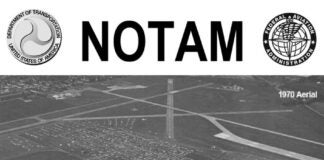 Expletive Not Deleted (Best Letter)
Expletive Not Deleted (Best Letter)
Dagnabbit! Tarmac is a material, not a place. Are you fed up with the medias ignorance? Places on airports have names. Runway: usually a straight, flat, piece of land where airplanes take off and land. Taxiways: roads used by airplanes to get to and from other places on the airport. Apron: often a concrete, sometimes asphalt area just outside the terminal, office space or hangar. Ramp: on larger airports usually a concrete paved area used by airplanes to get from the loading/unloading area to the taxiways leading to and from the runways. Hangers: those buildings designed to house airplanes during service or while not in use. Tiedown area: an area with facilities used to secure airplanes outside when not being used. When you see or hear one of the media babble about an airplane being on the tarmac, call or write to straighten them out.
Bud Potts
We couldn’t agree more. But for the rest of you, this is not an invitation to use dagnabbit or any of its variations to get a Best Letter!-Ed.
Can You Feel the Vibe?
Jim Weir addresses the vibration components in an aircrafts propulsion system, stemming mainly from an unbalance in the engine or propeller. Usually when we think of a propeller unbalance it has to do with mass balance. But there’s another aspect that is seldom considered, and that is an aerodynamic unbalance, the result of a differential force due to a small difference of the blades in pitch, planform or both. If a two-blade propeller is mounted to a 6-inch flange with as little as 0.01-inch (ten-thousandths of an inch) difference across its face crosswise to the span, this will set up a 0.1 pitch increase on one blade and 0.1 pitch decrease on the other. If the propeller has a design CL of 0.4, approximately 4, one blade will be at 4.1 and the other at 3.9, a differential of 5%. So how would that affect a plane with 160 hp flying at 175 mph, at 75% power, with a prop of 80% efficiency? The 96 thrust horsepower gives 52,800 foot-pounds/sec. Dividing that by the forward speed of 256.7 feet/sec, 175 mph gives 205.7 pounds of thrust; 5% of that is 10.3 pounds, first on one side, then the other, all the way around. Thats a 20.6-pound whirl on the engine, so it is important to not only have the prop mass balanced, but also accurately mounted to the drive flange. This also shows that it is important with ground-adjustable propellers for the pitch of the blades be very accurately matched!
Paul Lipps
One would do well to listen to Lipps regarding propellers. Having designed some of the most wicked and forward-thinking props we’ve seen, his credentials are out there for all to see.-Ed.
Tech Appropriate
I appreciate Mike McMains view expressed in his April 2010 letter suggesting that too much electronics in a homebuilt leads to too much expense and heavy pilot training requirements. His suggestion that a Dynon EFIS is cost justified is a good one. For those with a few extra dollars to spend, I would suggest two Dynons is better than one. A Dynon EFIS coupled to a Dynon EMS gives extra functionality that is hard to get any other way. It may be a bit more expensive than using round engine gauges, but sometimes that can be justified.
I like having my engine rpm displayed along with the basic flight instrument readouts on the Dynon EFIS. This is something I frequently need-especially at high workload portions of a flight-and I find it easier to look straight down to the EFIS instead of having to look across the cockpit to find the tachometer or EMS screen. In addition, the heavily calibrated fuel readout can give you reasonably good confidence that the indicated fuel level is accurate. This is something I never found to be true in round fuel gauges.
ADS-B is one of those fancy gadgets I would happily install if only it were available. My biggest fears in flying involve weather and potential midair collisions. A fully functional ADS-B setup directly addresses both of these issues. In high-density traffic areas, it should give you a complete picture of the planes around you. The weather information provided by the FAA might be overkill for VFR pilots, but it certainly cant hurt.
Even these concessions to new high-tech equipment can leave a pilot floundering in buttons while trying to fly the plane first. I find the pushbutton altimeter adjustment too much to do while setting up an approach to a controlled airport. Of course, Im a VFR pilot who flies mostly by visual reference, so the updated altimeter settings controllers give me at the last moment have little value anyway. I don’t know how ADS-B will stack up in this area, but I am willing to pay the training and operator confusion price for really good traffic information.
Paul Mulwitz













